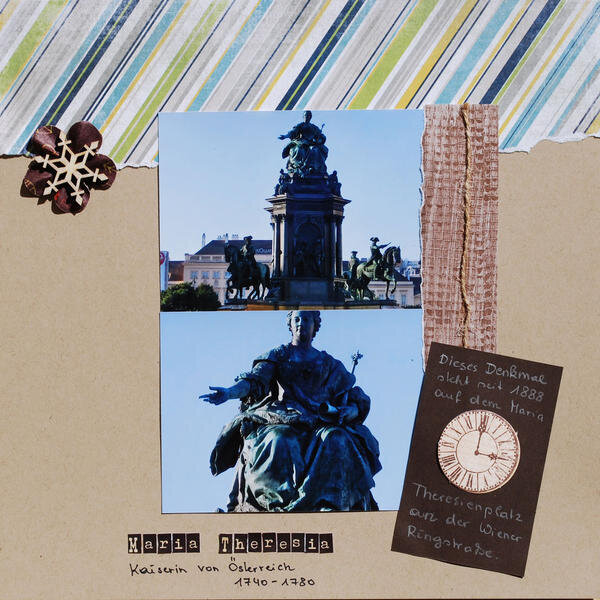EXTRA 11% OFF Orders $100+ With Code: THANKYOU


 Give a Cheer
Give a Cheer
I just like this statue of our former empress of Austria Maria Theresia, who was a very interesting woman.
I had to edit this to put a few words about her on here, I took them from wikipedia since I am not as good as them writing everything in english ;) : She lived from 1717 – 1780 and was the only female ruler of the Habsburg dominions and the last of the House of Habsburg. She was the sovereign of Austria, Hungary, Croatia, Bohemia, Transylvania, Mantua, Milan, Lodomeria and Galicia, the Austrian Netherlands and Parma. By marriage, she was Duchess of Lorraine, Grand Duchess of Tuscany and Holy Roman Empress.[2]
She started her 40-year reign when her father, Emperor Charles VI, died in October 1740. Charles VI paved the way for her accession with the Pragmatic Sanction of 1713 and spent his entire reign securing it. Upon the death of her father, Saxony, Prussia, Bavaria, and France all repudiated the sanction they had recognised during his lifetime. Frederick II of Prussia (who became Maria Theresa's greatest rival for most of her reign) promptly invaded and took the affluent Habsburg province of Silesia in the seven-year conflict known as the War of the Austrian Succession. Over the course of the war, despite the loss of Silesia and a few minor territories in Italy, Maria Theresa successfully defended her rule over most of the Habsburg empire. Maria Theresa later unsuccessfully tried to reconquer Silesia during the Seven Years' War.
Maria Theresa and her husband, Francis I, Holy Roman Emperor, had eleven daughters, including the Queen of France, the Queen of Naples and Sicily, the Duchess of Parma, and five sons, including two Holy Roman Emperors, Joseph II and Leopold II. Of the sixteen children, ten survived to adulthood. Though she was expected to cede power to Francis and Joseph, both of whom were officially her co-rulers in Austria and Bohemia, Maria Theresa was the absolute sovereign who ruled with the counsel of her advisers. She criticised and disapproved of many of Joseph's actions. Maria Theresa understood the importance of her public persona and was able to simultaneously evoke both esteem and affection from her subjects.
Maria Theresa promulgated financial and educational reforms, promoted commerce and the development of agriculture, and reorganised Austria's ramshackle military, all of which strengthened Austria's international standing. However, she refused to allow religious pluralism and advocated for the state church and contemporary adversary travelers criticized her regime as bigoted and superstitious.
No products have been added to this project.
Thanks for spreading positivity!
March 17, 2018
March 13, 2018
March 12, 2018
March 12, 2018
March 12, 2018
March 12, 2018
March 12, 2018
March 12, 2018